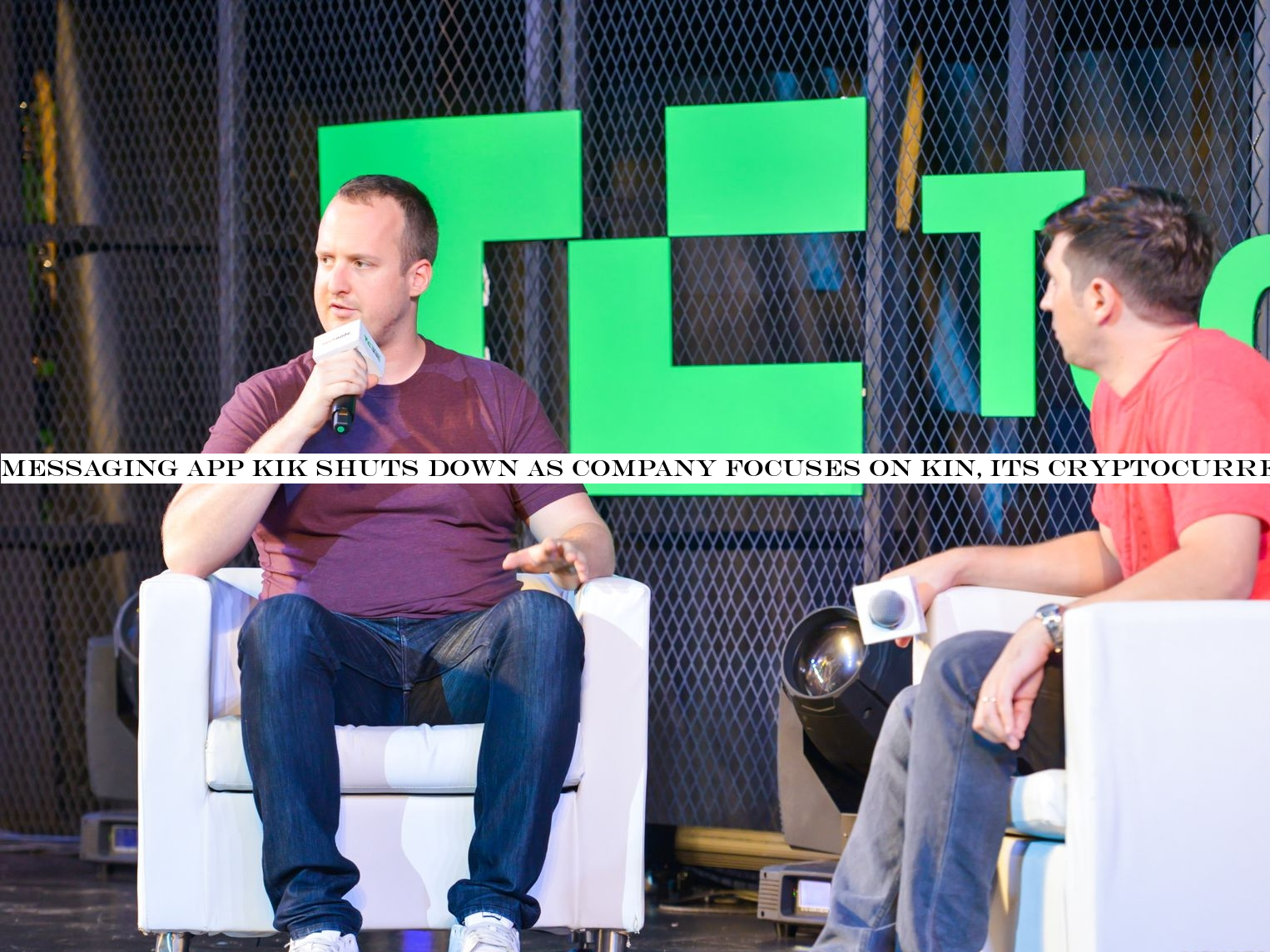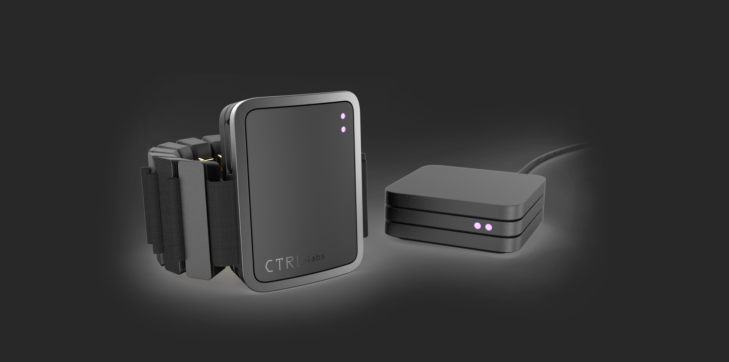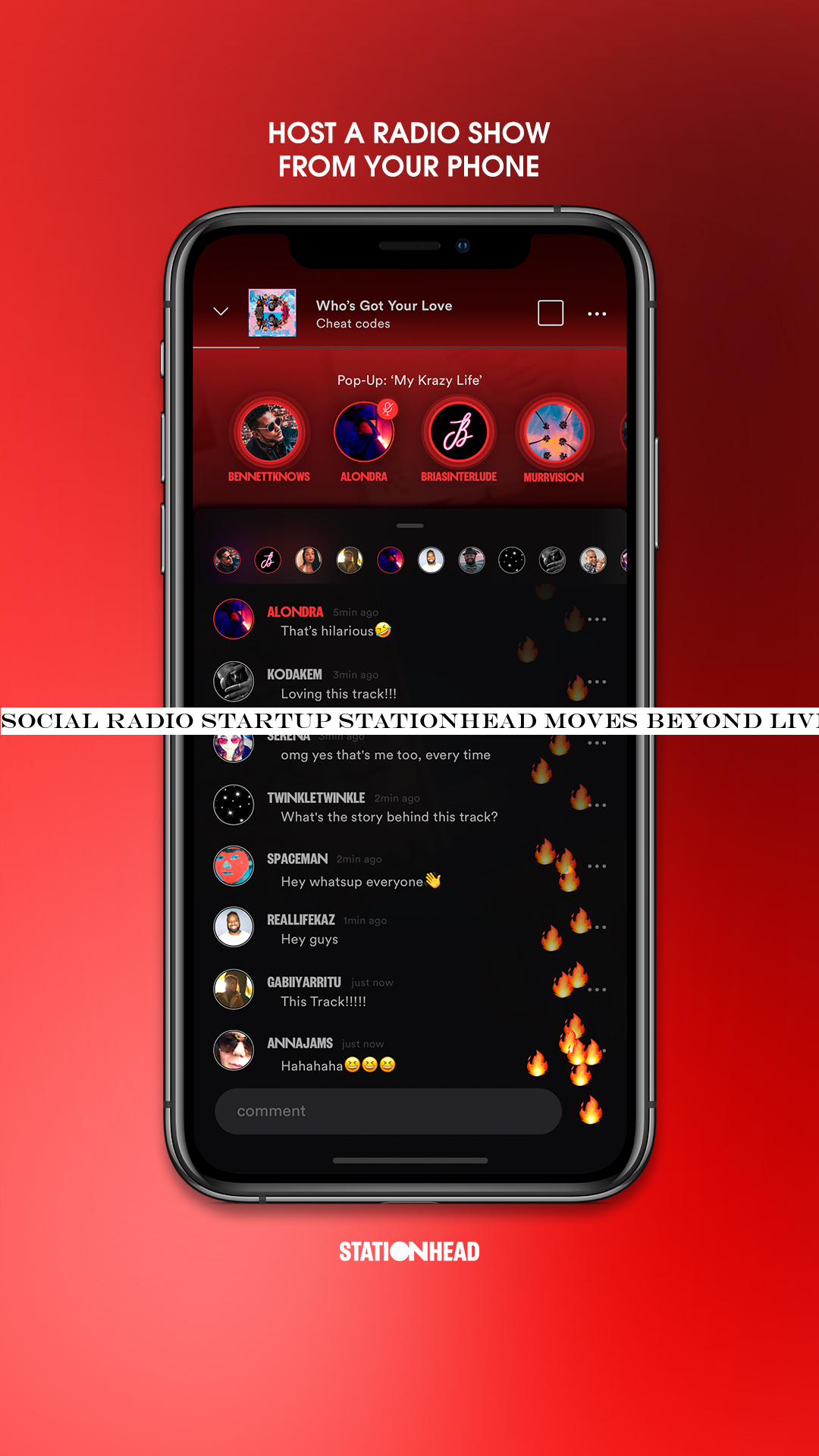Music
Trailers
DailyVideos
India
Pakistan
Afghanistan
Bangladesh
Srilanka
Nepal
Thailand
StockMarket
Business
Technology
Startup
Trending Videos
Coupons
Football
Search
Download App in Playstore
Download App
Best Collections
Technology

Kik Interactive CEO Ted Livingston announced today that the company is shutting down Kik Messenger to focus on its cryptocurrency Kin, the target of a lawsuit filed by the Securities and Exchange Commission. The companyteam will be reduced to 19 people, a reduction that will affect over 100 employees, as it focuses on converting more Kin users into buyers.
&Instead of selling some of our Kin into the limited liquidity that exists today, we made the decision to focus our current resources on the few things that matter most,& Livingston wrote in a blog post, adding that the changes will reduce the companyburn rate by 85%, enabling it to get through the SEC trial.
Kin launched two years ago, raising nearly $100 million in its ICO, one of the first held by a mainstream tech company.
But in June, the SEC filed a lawsuit against Kik Interactive, claiming the ICO was illegal, as part of the Commissionwider crackdown on companies it alleges are issuing securities illegally.
The SEC also claimed that the companymanagement had predicted Kik Messenger would run out of money by 2017, when it started planning the launch of Kin. Kik Interactive hit back in a court filing last month, saying that the SECclaims about its finances were &solely designed for misdirection, thereby prejudicing Kik and portraying it in a negative light.&
One of the core issues in the lawsuit is whether or not Kin is a security. The SEC alleges that it is and that the token sale violated securities laws. Kik Interactive denies Kin is a security.
&After 18 months of working with the SEC the only choice they gave us was to either label Kin a security or fight them in court. Becoming a security would kill the usability of any cryptocurrency and set a dangerous precedent for the industry,& Livingston wrote in todayblog post. &So with the SEC working to characterize almost all cryptocurrencies as securities we made the decision to step forward and fight.&
Livingston added that since Kin isn&t available on most exchanges, it doesn&t rely on speculative demand. Instead, Kin is used by &millions of people in dozens of independent apps,& with more than two million monthly active users and 600,000 monthly active spenders, he wrote. Kik Interactiveobjective now is to increase those numbers.
To get more people who buy Kin to use the currency, Livingston said the company will focus on three things: enabling the Kin blockchain to support a billion consumers making a dozen transactions a day, with confirmation times of less than a second; increasing adoption and growth for developers who use Kin in their apps; and building a mobile wallet that makes it easier to buy and use Kin.
- Details
- Category: Technology
Read more: Messaging app Kik shuts down as company focuses on Kin, its cryptocurrency
Write comment (96 Comments)If you&re a VC or founder in London, Bangalore or San Francisco, you&ll likely interact with some part of Africatech landscape for the first time — or more — in the near future. When measured by monetary values, the continenttech ecosystem is small by Shenzhen or Silicon Valley standards.
But when you look at year-over-year expansion in venture capital, startup formation and tech hubs, itone of the fastest-growing tech markets in the world.
Join us at TechCrunch Disrupt SF where we will host a Q-A session on VC in Africa with Orange Digital Ventures& Marieme Diop, International Finance Organization‘sWale Ayeniand 500 Startups& Sheel Mohnot, three Africa-based investors who bring plenty of experience screening startups across its top tech hubs. We&ll open up the bulk of the session to allow Disrupt attendees to ask questions of each speaker.
Marieme Diop oversees Africa VC investments at Orange Digital Ventures, the funding arm of Francelargest telecom, Orange.
Under her tutelage,Orange Digital Ventures(ODV) participated in a$16 million roundfor South African fintech startup Yoco and the$8.6 million round to AfricaTalking—a Pan-African business enterprise software startup.
Formed in 2017, ODV is a €150 fund with €50 allocated for Africa, according to Diop. Orange was one of the early investors in Africa focused e-commerce unicorn, Jumia, which recently went public in a NYSE IPO.
Diop is also working to bridge the resource gap for startups in French-speaking Africa — or 24 of the continent54 countries.
This year she was a co-founder of Dakar Angels Network, a seed fund offering $25,000 to $100,000 investments and entrepreneurial guidance to early-stage ventures in Francophone Africa.

Wale Ayeni leads the IFC venture capital practice focused on Sub-Saharan Africa — IFC is part of the World Bank Group. The IFCventure capital team focuses on technology companies in frontier markets, and has deployed ~$800 million in early/growth-stage tech investments over the past decade.
Recent funding includes co-leading a $6.5 million Series A round in South African fintech company Lulalend and participating in one of the larger tech investments in African tech this year — the $20 million Series A round raised by Nigerian trucking logistics startup Kobo360.
Sheel Mohnot leads fintech investments for 500 Startups . The San Francisco based accelerator has been out front on Africa, taking its Geeks on a Plane tour to the continent in 2017, and racking up over 40 Africa related investments, according to Mohnot.
He recently led 500 Startups& seed-stage investment in Chipper Cash, an Africa focused cross-border payment venture.
Startups building financial technologies for Africa1.2 billion population are gaining greater attention of investors. As a sector, fintech (or financial inclusion) attracted 50% of the estimated $1.1 billion funding to African startups in 2018,according to Partech.
So bring your bring your questions on investing in fintech and other sectors in Africa to Disrupt SF on October 4, where speakers Diop, Ayeni, and Mohnot will take the Q-A stage to share their expert insights.
- Details
- Category: Technology

Facebook is buying CTRL-labs, a NY-based startup building an armband that translates movement and the wearerneural impulses into digital input signals, a company spokesperson tells TechCrunch.
CTRL-labs raised $67 million according to Crunchbase. The startupinvestors include GV, Lux Capital, AmazonAlexa Fund, Spark Capital and Founders Fund, among others. Facebook didn&t disclose how much they paid for the startup, but we&re digging around.
Update: Bloomberg pegs the deal between $500 million and $1 billion. A source close to the matter tells TechCrunch the same.
The acquisition, which has not yet closed, will bring the startup into the companyFacebook Reality Labs division. CTRL-labs& CEO and co-founder Thomas Reardon, a veteran technologist whose accolades include founding the team at Microsoft that built Internet Explorer, will be joining Facebook, while CTRL-labs& employees will have the option to do the same, we are told.
Facebook has talked a lot about working on a non-invasive brain input device that can make things like text entry possible just by thinking. So far, most of the companyprogress on that project appears to be taking the form of university research that they&ve funded. With this acquisition, the company appears to be working more closely with technology that could one day be productized.
&We know there are more natural, intuitive ways to interact with devices and technology. And we want to build them,& Facebook AR/VR VP Andrew Bosworth wrote in a post announcing the deal. &Itwhy we&ve agreed to acquire CTRL-labs. They will be joining our Facebook Reality Labs team where we hope to build this kind of technology, at scale, and get it into consumer products faster.&
CTRL-labs& technology isn&t focused on text-entry as much as it is muscle movement, and hand movements specifically. The startupprogress was most recently distilled in a developer kit that paired multiple types of sensors together to accurately determine the wearerhand position. The wrist-worn device offered developers an alternative to camera-based or glove-based hand-tracking solutions. The company has previously talked about AR and VR input as a clear use case for the kit. Facebook did not give details on what this acquisition means for developers currently using CTRL-labs& kit.
This acquisition also brings to Facebook the armband patents of North (formerly Thalmic Labs). CTRL-labs purchased the patents related to the startupdefunct Myo armband earlier this year for an undisclosed sum.
CTRL-labs& acquisition brings more IP and talent under Facebookwings as competitors like Microsoft and Apple continue to build out augmented reality products. There is plenty of overlap between many of the technologies that Oculus is building for Facebookvirtual reality products, like the Quest and Rift S, but CTRL-Labs& tech can help the company build input devices that are less bulky, less conspicuous and more robust.
&There are some fundamental advantages that we have over really any camera-based technology — including Leap Motion or Kinect — because we&re directly on the body sensing the signal thatgoing from the brain to the hand.& CTRL-labs& head of R-D, Adam Berenzweig, told TechCrunch in an interview late last year. &There are no issues with collusion or field-of-view problems — it doesn&t matter where your hands are, whether they&re in a glove or a spacesuit.&
Facebook is holding its Oculus Connect 6 developer conference later this week, where the company will be delivering updates on its AR/VR efforts.
- Details
- Category: Technology
Read more: Facebook buys startup building neural monitoring armband
Write comment (95 Comments)
Engage:BDRannounced today that it has raised $23.25 million in new funding.
CEO Ted Dhanik told me that this includes both debt and equity funding, and will be used to grow the companyNetZero payments program.
NetZero is designed to address the ongoing issue of long delays faced by publishers before they get paid by advertisers. Dhanik said &the terms are getting worse and worse,& with publishers being asked to wait 30, 60, 90 or even 120 days after they invoice their advertising partners before payment.
Other companies like FastPay have tried to fill in the gap, but Dhanik said these loans can have interest rates as high as 25%. So the team at Engage:BDR (which is publicly traded on the Australian Securities Exchange) asked itself: &Hey, what if we could just pay publishers the exact same day that they invoice us?&
Rather than making money by charging interest, Dhanik said his company is trying to drive more publishers to its programmatic advertising platform.
&We just want the business — the incremental revenue,& he said.
Engage:BDR says web, mobile and connected TV publishers in North America, Australia and Europe are eligible to participate in the NetZero program, though they&ll need to be approved by the company first.
&If you think about NetZero, you might think: Hey, if therefraud, itpretty dangerous you don&t have the ability to clawback [the payment],& Dhanik said. But apparently Engage:BDR has &a lot of technology in place to qualify them pretty quickly, within the first few days.&
- Details
- Category: Technology
Read more: Engage:BDR raises $26.25M to fund its NetZero publisher payments
Write comment (97 Comments)Stationhead, the mobile app that turns its users into streaming radio DJs, got a big upgrade today. Where Stationhead DJs were previously limited to broadcasting live, they can now record their shows, making them available on-demand for anyone to listen later.
The idea behind Stationhead is to democratize and recapture the personality of traditional radio broadcasts — the kind of conversation and personal connection thatmissing from a playlist.
The app includes features like the ability to call guests to join the show, and integration with Spotify and Apple Music. For Stationhead, that means it doesn&t have to make its own licensing deals with the music labels; for listeners, it means that when a DJ plays a song, you&re hearing it stream from the music service of your choice.
That integration will continue with these new on-demand broadcasts — so they don&t really exist as a single, continuous recording, but rather as DJ recordings interspersed with cued-up songs from Apple or Spotify. (Thatpresumably why these broadcasts won&t be available for offline listening.)
CEO Ryan Star (pictured above) has said that he co-founded Stationhead as a result of his own frustrations as an independent musician, particularly the difficulty and cost of getting a single played on the radio.
More recently, he told me that Stationhead is becoming a real alternative for independent musicians trying to get attention, with more than 200,000 shows created since November of last year.

&Some shows are mostly talk, some shows are mostly music, but just having the ability to play the song completely changes the way itconsumed,& said COO Murray Levison.
The company isn&t sharing overall listener numbers, but it pointed to success stories like Burrell Kobe, who said he drove 23,000 streams on Stationhead. (SensorTower estimates that the iOS app has been installed by 110,000 users globally.)
And Star described the Stationhead approach as combining &creative freedom and real human connection. While the most popular Stationhead broadcasts can get more than 1,000 live listeners, he suggested that the connection can happen even when the audience is much smaller: He recalled stumbling on a broadcast where he was literally the only person listening, but the host was &spilling her guts — this was her therapy.&
And by making these broadcasts available on-demand, he said Stationhead is &tapping into something proven to be the most intimate form of communication.&
He added, &For the first time, you&re actually able to create binge-able audio content around these streams.&
- Details
- Category: Technology
Read more: Social radio startup Stationhead moves beyond live broadcasts
Write comment (93 Comments)
We&ve aggregated the worldbest growth marketers into one community. Twice a month, we ask them to share their most effective growth tactics, and we compile them into this Growth Report.
This is how you&re going stay up-to-date on growth marketing tactics — with advice you can&t get elsewhere.
Our community consists of 600 startup founders paired with VPof growth from later-stage companies. We have 300 YC founders plus senior marketers from companies including Medium, Docker, Invision, Intuit, Pinterest, Discord, Webflow, Lambda School, Perfect Keto, Typeform, Modern Fertility, Segment, Udemy, Puma, Cameo, and Ritual.
You can participate in our community by joining Demand Curvemarketing webinars, Slack group, or marketing training program. See past growth reports here,here and here.
Without further ado, onto the advice.
How do you sponsor YouTube influencers cost-effectively?
Based on insights from Bjarke Felbo of Rune (LinkedIn). Lightly edited with permission.
- Influencers often expect compensation proportional to subscribers, but conversions happen proportional to views. So go after the influencers with high views and low subscribers. Thatthe trick.
- We&ve had the best success with 30-60 second promo spots at the beginning of the influencervideo.
- We&ve seen success depend on the video itattached to and what time of day/week itposted, so we&re strict about setting rules around that. Or, we give them a bonus based on the videoview count to incentivize them to put our spot on a high-quality video.
- Be careful with repeat promotions with the same influencer. These haven&t yielded noteworthy returns for us — even after months. Itlikely that the audience becomes saturated.
For SEO, how much does link building really matter in 2019?
From Nat Eliason of Growth Machine. Lightly edited by Demand Curve with permission.
- Links are still important, but their importance is decreasing steadily. Google is getting better at evaluating content quality, and itfocusing more on that.
- Consider this: Google doesn&t want to be gameable, and domain authority and link building are very gameable. But content quality is not. You can&t fake good content.
- Many major blogs outside of high authority spaces have grown rapidly using less link-building. Much of their energy is instead spent on choosing the right keywords (low competition, but still acceptable volume) and writing useful content that satisfies the searcherintent.
- However, link-building can still speed up the process quite a bit if you&re on a tight timeline, or if you&ve given content 3-4 months to rank and aren&t seeing the results you want.
Growth masterclasses kick off now
Today, the advanced growth masterclasses kick off. They&re all free.
- Validating New Ideas w/ Hiten Shah (FYI, KISSmetrics, Crazy Egg)
- Growth Office Hours w/ Gustaf Alströmer (YC Partner)
- Landing Page Critiques w/ Bob Sparkins (Leadpages)
- Referral Programs w/ Thomas Maremaa (Brex) + Jeremy Gurewitz (Imperfect Produce)
- Advanced Content Writing w/ Nat Eliason (Growth Machine) + Bernard Huang (Clearscope)
- Email Marketing for Ecom w/ Mike Arsenault (Rejoiner)
These are rapid-fire, short, and advanced webinars. They&re not boring introductory lectures. This is some of the best content we produce. Don&t miss these, especially when they&re free.
Enroll here: demandcurve.com/webinars
Whatthe best way to take over a Twitter account from an inactive user?
Based on insights from Andrew Ettinger of Atoms. Lightly edited with permission.
Someone has your brand name as their Twitter handle and their account is inactive. How do you get access to it?
- Create an ads account with an existing handle you want to swap for the one you&re trying to claim.
- Go to twitter.com/en/help
- Click on Account issues -> Claim an inactive username.
- Submit a case.
You&ll then want your Twitter ads account manager to escalate your case (give them the case #).
This is not guaranteed. Your best chance of claiming that handle will be to have an existing Twitter employee escalate your case.
Demand CurveAsher King Abramson will lead a growth marketing session where he&ll tear down your landing pages and Facebook/Instagram ads in front of a live audience. He&ll deconstruct how effective they are at (1) conveying what you do (2) and doing so enticingly — so that people click.
If you&re attending Disrupt and want to participate, you can submit your assets to This email address is being protected from spambots. You need JavaScript enabled to view it. for him to consider.
- Details
- Category: Technology
Read more: What’s the right way to sponsor a YouTube influencer
Write comment (99 Comments)Page 812 of 5614

 13
13





